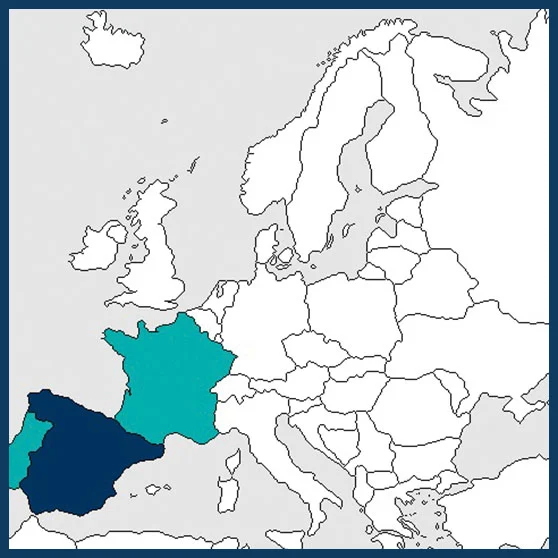03-2017 to 02-2020
€ 559,108
Dr. José Luis Acuña
acuna@uniovi.es
University of Oviedo, Orviedo, SPAIN (Coordinator)
ENSTA Bretagne, Brest, FRANCE
University Pierre and Marie Curie, Roscoff, FRANCE
University of Evora, Sines, PORTUGAL
University of Aveiro, Aveiro, PORTUGAL
University of Vigo, Vigo, SPAIN

Spatial management of the marine environment is central to the EU environmental strategy, although it has not been at the forefront of the Common Fisheries Policy. It is time to focus on those rare cases of fine-scale spatial management of marine resources currently active in Europe, to extract precious information of potential relevance to other contexts. The Stalked Barnacle (SB) fishery is one of such cases.
Project PERCEBES builds on the sheer diversity of management scenarios of the European Stalked Barnacle fishery, from open access through marine protected areas to Territorial Users Rights for Fishing, a kind of fine-scale, adaptive, spatial co-management system. PERCEBES will use that variety of management scenarios to develop a set of tools to forecast the implications of spatial management options on productivity, biodiversity and connectivity of barnacle stands, and to extract information to guide marine spatial planning in other contexts in the EU.
PERCEBES is intended as a scientific and practical demonstration of the effects of SB harvesting on the biodiversity, productivity and connectivity of SB stands. This will be done by a continental-scale, Human Exclusion Experiment (HEE) and by construction of regional, spatially explicit Bioeconomic Models (BM) on the coasts of Alentejo (Portugal), Atlantic Islands (Galicia, Spain), Western Asturias (Asturias, Spain) and South Brittany (France), covering the latitudinal range where the barnacles are exploited in the EU. The HEE will use steel cages to simulate the effects of 1 and 2-year harvest halts and open plots as controls where harvest continues unimpeded. The HEE will test the effect of those treatments on the biodiversity, productivity and economic value of SB stands and on their potential to produce larvae. The results of the HEE will be linked to biophysical larval dispersal models to visualise the seeding effects of fallow or protected areas on other regions and the patterns of connectivity among managed or co-managed units. These models will be validated by direct measurement of recruitment distributed in time and space.
PERCEBES contemplates a collaborative engagement of stakeholders, with fishers, administrations and NGOs involved in site selection, experiment surveil- lance and sample collection. PERCEBES seeks to establish a consortium with the fishers to secure a large number of recruitment observations distributed in time and space. The project will combine results from experiments, hydrodynamic models and landings data into spatially explicit bioeconomic models which will allow the generation of “policyscapes” to optimise the conservation/exploitation trade-off. This is of interest for Administrations seeking to manage the SB fishery. At the end of PERCEBES, fishers, scientists, administrators and ONGs will participate in a facilitated workshop with the goal of producing a Policy Brief with recommendations based on the project results. PERCEBES will also produce a video documentary focused on the effects of harvesting on biodiversity patterns, intended for a general audience, and focused on the science of the interaction humans-ecosystem.